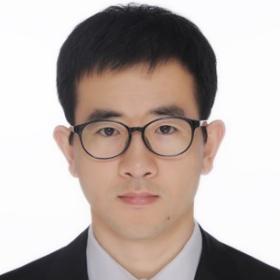
电话:17549543420
个人简介
刘双,男,1991年04月生,理学博士,九三学社社员,四川大学特聘副研究员,高分子材料工程国家重点实验室固定人员,长期以来以缔合高分子体系和缠结高分子体系为研究导向,阐明分子基团、拓扑分子结构-流变行为-加工行为三者构效关系,面向高分子材料功能设计和加工调控研究。
近年来发表高分子领域SCI期刊20余篇,其中以一作或通讯发表在Macromolecules、ACS Macro Letters、Journal of Rheology、 Polymer、 Physics of Fluids等期刊10余篇。主持国家自然科学基金52303027、四川省自然科学基金2024NSFSC1140、中国博士后科学基金第73批面上项目2023M731442、高分子材料工程国家重点实验室优秀青年人才项目2024skp731442。
工作经历
2024.02—至今 四川大学高分子研究所 特聘副研究员
2021.12—2024.2 四川大学高分子研究所,专职博士后/助理研究员
2021.12—2024.2 金发科技股份有限公司,中央研究院,专职博士后
教育背景
2018.06—2021.12硕博连读,中国科学院长春应用化学研究所,获中国科学技术大学,高分子化学与物理理学博士
2016.09-2018.06保送至中国科学院长春应用化学研究所,化学工程硕士
2012.09—2016.06 四川师范大学 物理与电子工程学院 工学学士
具体研究内容:
1. 缔合高分子体系线性与非线性流变学行为研究、介电行为研究;
2. 缠结聚合物熔体和溶液体系的线性与非线性剪切和拉伸流变学行为研究;
3. 基于AIE探针分子可视化共混高分子在流场下的形态结构与调控研究。
主持承担的研究项目
1. 国家自然科学基金青年项目52303027, 资助期限2024.1-2026.12 项目经费30万元,主持在研;
2. 四川省自然科学基金青年项目2024NSFSC1140,资助期限2024.1-2022.12 项目经费10万元,主持在研;
3. 中国博士后科学基金第73批面上项目2023M731442,资助期限2023.6-2025.12 项目经费8万元,主持在研;
4. 高分子材料工程国家重点实验室 优秀青年人才项目2024skp731442, 资助期限2024.7-2026.7 项目经费20万元,主持在研;
5. 日本京都大学化学研究所合作项目(2019-52),日本京都大学化学研究所合作项目(2021-62) 合作导师:Prof. Hiroshi Watanabe和Prof. Yumi Matsumiya,资助期限2019.1-2021.12项目经费10万元,骨干参与,已结题;
6. 国家自然科学基金面上项目21873095, 资助期限2019.1-2021.12项目经费65万元,骨干参与,已结题。
学术交流报告
1. 第19届国际流变学大会ICR2023 oral 希腊雅典(2023.8)
2. 第16届全国流变学会学术会议 口头报告 福州(2023.7)
3. 中国化学会第33届学术年会第二十五分会流变学 口头报告 青岛(2023.6)
论文专著
代表性论文
22. Shuang Liu, Manfred Wagner, Teng Cui and Qian Huang*. Universality and nonuniversality in nonlinear shear rheology of entangled polystyrenes and melts with the same number of entanglements. Physics of Fluids, 2024, Accepted. 编辑选为“Feature” Paper.
21. Manfred Wagner*, Shuang Liu and Qian Huang*. The Effect of Rotationality on Nonlinear Shear Flow of Polymer Melts and Solutions. Rheological Acta, 2024, 63(6), 573–584.
20. Yinrui Wang, Anika Goecke, Valerian Hirschberg, Yiming Zhong, Shuang Liu,Manfred Wilhem and Qian Huang*. Unexpected Stress Overshoot in Extensional Flow of Star Polymer Melts. ACS Macro Letters, 2024, 13: 812-817.
19. Yiming Zhong, Shuang Liu, Longbo Luo and Qian Huang*. Influence of Chemical Side Groups Containing Aromatic Rings: Flow Induced Friction Enhancement or Reduction. Macromolecules, 2024, 52(6), 2265-2276.
18. Jie Zhou, Shuang Liu, Zhang Y, Yanfang Ma* and Jianchuan Liu* Modulation of Phase Separation Morphology by Configuration Engineering in Bulk Heterojunction Organic Solar Cells. Solar RRL, 2024: 2400074.
17. Shuang Liu, Li peng, Siying Xiang, Hongbo Chen, Yajiang Huang, Xianbo Huang*, Qian Huang*. Extensional Flow-induced Concentration Gradient in Entangled Polymer Solutions with Chemically Identical Species. ACS Macro Letters, 2023, 9: 917-923.
16. Shuang Liu, Jiaqi Zhang, L. R. Hutchings, Li Peng, Xianbo Huang*, Qian Huang*. The “solvent” effect of short arms on linear and nonlinear shear rheology of entangled asymmetric star polymers. Polymer, 2023,126125.
15. 刘双, 黄茜*, 陈全*, 黄险波. 流变技术在高分子表征中的应用:拉伸流变测试. 高分子学报, 2023, 54(02):286-302.
14. Shuang Liu, Yanjie Zhang, Zhijie Zhang and Quan Chen*. Nonlinear rheological behavior of telechelic ionomer with distribution of ionic stickers at the ends. Journal of Rheology, 2022, 66,1-16. 编辑选为“Feature” Paper.
13. Jing Chen, Yiyang Gao, Lei Shi, Wei Yu, Zongjie Sun, Yifan Zhou, Shuang Liu, Mao Heng, Dongyang Zhang, Tongqing Lu, Quan Chen, Demei Yu and Shujiang Ding*. Phase-locked constructing dynamic supramolecular ionic conductive elastomers with superior toughness, autonomous self-healing and recyclability. Nature Communications, 2022, 13(1), 4868.
12. Shuang Liu, Shilong Wu, Zhijie Zhang, Quan Chen*, Yumi Matsumiya and Hiroshi Watanabe. Nonlinear rheology of telechelic ionomers based on sodium sulfonate and carboxylate. Macromolecules, 2021,54,9724-9738.
11. Shuang Liu, Xiao Cao, Chongwen Huang, R. A. Weiss, Zhijie Zhang and Quan Chen*. Brittle-to-ductile transition of sulfonated polystyrene ionomers. ACS Macro Letters, 2021,10: 503-509.
10. 刘双, 曹晓, 张嘉琪, 韩迎春, 赵欣悦, 陈全*. 流变技术在高分子表征中的应用:如何正确地进行剪切流变测试. 高分子学报, 2021, 52(4):406-422.
9. Shuang Liu, Shilong Wu and Quan Chen*. Using coupling motion of connecting ions in designing telechelic ionomers. ACS Macro Letters, 2020, 9: 917-923.
8. Xingxing Chen, Qianyun Zhong, Chenhui Cui, Li Ma, Shuang Liu, Qiang Zhang, Youshen Wu, Le An, Yilong Cheng, Shibo Ye, Xiaoming Chen, Zhen Dong, Quan Chen and Yanfeng Zhang*. Extremely tough, puncture-resistant, transparent, and photoluminescent polyurethane elastomers for crack self-diagnose and healing tracking. ACS Applied Materials & Interfaces, 2020, 12(27), 30847-30855.
7. Shilong Wu, Shuang Liu, Zhijie Zhang, Quan Chen*. Dynamics of telechelic ionomers with distribution of number of ionic stickers at chain ends. Macromolecules, 2019, 52(6), 2265-2276.
6. Shuang Liu, Guozhu Jia*. The dielectric properties of LiOH aqueous solution under external electromagnetic fields by molecular dynamics simulation. Journal of Molecular Liquids, 2016, 216: 747-753.
5. Guozhu Jia*, Shuang Liu, Fenghai Liu. Ion–water cooperative interactions in aqueous solutions of MgCl2 by dielectric spectroscopy. Journal of Dispersion Science and Technology, 2016, 37(1): 1-5.
4. Shuang Liu, Guozhu Jia*, Fenghai Liu. Beyond the first hydration shell: dielectric study of LiCl aqueous solution. Physics and Chemistry of Liquids, 2016, 54(2): 155-164.
3. Shuang Liu, Guozhu Jia*, Shu Zhang. Consideration of fractal and ion–water cooperative interactions in aqueous Na2SO4 and K2SO4 solutions by dielectric relaxation spectroscopy. Physica A: Statistical Mechanics and its Applications, 2016, 441: 15-22.
2. Shuang Liu, Guozhu Jia*, Fenghai Liu. The dielectric properties response of aqueous LiOH solution at the microwave frequency. Ionics, 2015, 21: 471-476.
1. Jianchuan Liu, Guozhu Jia*, Shuang Liu. Dielectric relaxation in isobutyl alcohol-NMP and isobutyl alcohol-DMSO mixtures studied by microwave dielectric relaxation spectroscopy. Colloid and Polymer Science, 2015, 293: 289-296.